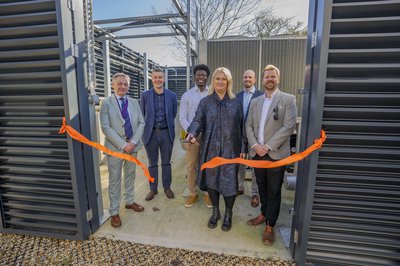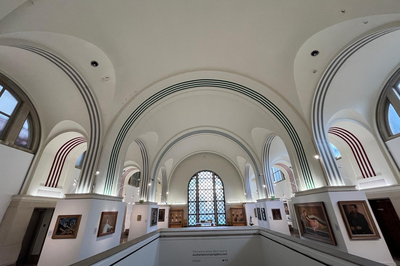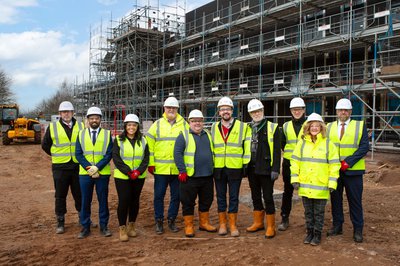Leicester CCF - St Margaret's Bus Station
The city of Leicester has seen major changes over the years as it boosts its appeal with greater connectivity to the city centre and, aspiring to reach their carbon neutral target by 2030 or sooner - the new bus station is an important stepping-stone forward.
Key Stats
- £6.9m Social Value generated
- Redevelopment of the former Bus Station
- Leicester City Council framework
- Number of bays increased from 18 to 24
- Electric bus charging points installed, and features secure storage for up to 150 bikes
- Carbon Neural Bus Station
- 99% waste diverted from landfill
At a Glance
Budget
£11.9 million
Completion
June 2022
Location
Leicester
Sector
Community, Bus / Coach Stations
Our Approach
The Leicester City Council Climate Emergency Strategy was declared in 2019, and part of the initial steps included the refurbishment of the iconic St Margaret’s Bus Station (SMBS), which has been a landmark in the city since 1940. By reimagining the Leicester SMBS, it has gone on to become a carbon neutral bus station.
The new bus station has been completely transformed with a refreshed, slick, and modern look largely down to the new fully glazed envelope in the concourse and the curved aluminium roof. It boasts a spacious layout with a new café and newsagents on the ground floor; whilst new council offices are located on the first floor. The station also provides, modern toilets with a changing facility, an improved digital passenger information board and increased capacity with 24 available bays.

Carbon Neutral
Every element of the bus station had been carefully designed to ensure the bus station is as carbon efficient as possible. The strategy was to completely strip back the bus station to its skeletal steel frame and reuse existing elements including its concrete on the main parts of the building. As a result of this, the embodied carbon cost of constructing the bus station substantially decreased by an equivalent of 575 tonnes.
By incorporating the fully glazed envelope in the concourse, this promoted natural lighting throughout the whole building. The design feature ensures overall energy usage in the building is reduced, and a substantial cost saving was made.
The integration of a solar farm on the curved roof which includes 390 photovoltaic panels, meant renewable and green energy will be pumped throughout the building. Due to all these design features, the building has an Energy Performance Certificate (EPC) with the highest possible rating of A+ and will operate as a fully net zero carbon building.
The new building encompasses electric bus charging points, and a new bike storage has been installed which accommodates over 100 bicycles. As part of Leicester’s e-bike share scheme, there have also been docking stations installed at the station.
Greater Connectivity
Greater connectivity throughout the city was a key component for the council’s wider strategy. As such, the infrastructure around the SMBS and the main arterial ring road of Leicester was redesigned with extensive and complex Section 278 works. With an already stringent programme, the team consulted with Highways England regarding the impact of road closures, diversions, and all necessary consequential complications. Following those consultations, out of hours work proved to be a significant solution which local subcontractors Danaher and Walsh completed. The section 278 works have allowed for better connectivity throughout the Leicester City centre and with the inclusion of bike routes, it will encourage many to consider their method of transport within the city.
The general landscaping of the area with new trees and reconfiguring the footpath means not only is Leicester more scenic around the station but promotes a greener living and fulfils the agenda for greater connectivity.
Constrained Site Challenges
The site was in a busy constrained city centre which meant that a set down area for materials was limited. For over half of the project the team worked in a live environment with the existing bus station moving to a public terminal right next door to the site cabins. Due to the site being constrained with a large space occupied for the public, the materials had to be delivered just-in-time for each phase as there was nowhere for storage on site.
Social Impact
The project sits in the heart of a busy Leicester City centre and has contributed to a positive impact for the local economy. Over £6 million was generated in Social Value, and of this, £2 million had directly supported local businesses. This involved material being donated to community projects nearby including the Sikh Temple scheme.
We always endeavour to support the next generation of construction professionals and throughout the whole life of the project, we had one work experience placement student on site working with our Groundworks contactor. Following the successful work experience, the student was then employed by a separate Groundworks company. We also supported three apprenticeships on the project and their support in helping us complete the SMBS was key.
Gallery
Related News
NEWS

Morgan Sindall Construction and Arts University Bournemouth celebrates completion of decarbonisation project
On Thursday 20 March, Morgan Sindall Construction and Arts University Bournemouth (AUB) celebrated the completion of a decarbonisation project which saw the installation of Air Source Heat Pumps (ASHPs) …
NEWS

Morgan Sindall Construction leads next phase of Southampton City Art Gallery’s historic renewal
Morgan Sindall Construction has commenced the next phase of a £4.3m restoration project at the Grade II* listed Southampton City Art Gallery, marking a significant milestone in the preservation …
NEWS

Morgan Sindall celebrates structural milestone at Nottinghamshire SEN school
Morgan Sindall Construction has marked a major milestone in the delivery of Horizons Academy, a new state-of-the-art, specialist educational needs (SEN) school in Mansfield, with a structure signing event.










